Climbing Expedition to 7000m The Nepalese government and NMA (Nepal Mountaineering Association) laws allow climbing in Nepal. Over the expedition portion of these mountains, the government has tight supervision. It is simpler for operators to plan peak climbing programs across the nation when they are NMA members. On the 7000m Climbing Expedition Nepal, climbers can attempt many of the most breathtaking 7000m Himalayan peaks in the world.
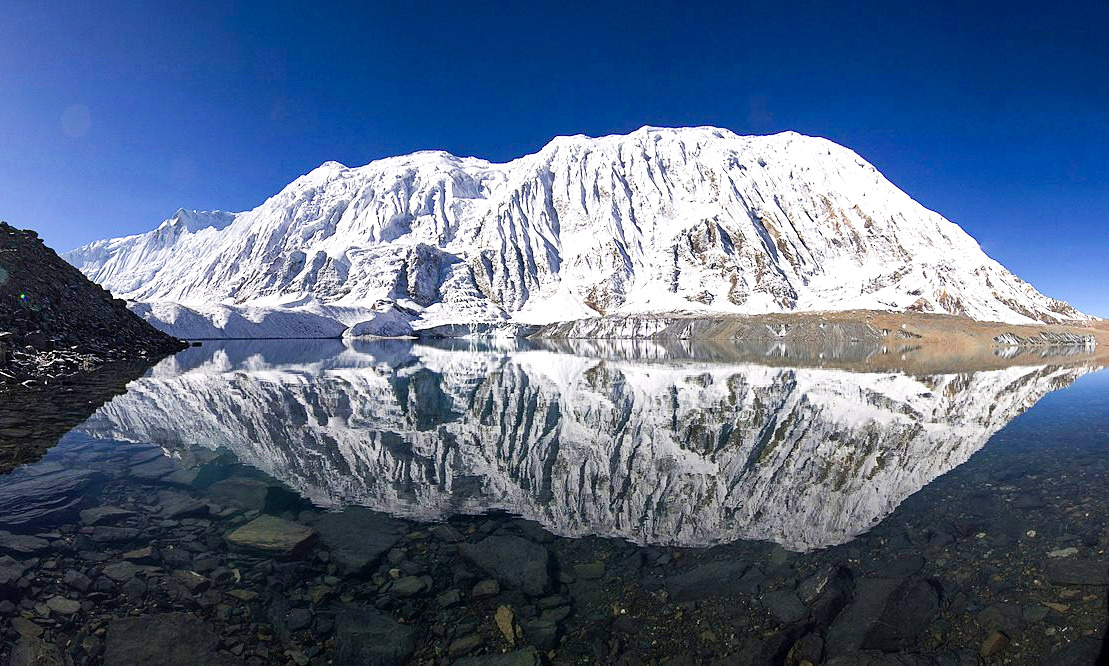
The planning for climbing these 7000m mountains is very easy compared to major 8000m excursions. Many of these climbs are challenging and risky, despite the fact that some of their summits are almost as high as peaks over 8,000 meters. Some of these include extremely challenging, expert-level snow and ice climbs.
Trekkers won't have any issue selecting their best option from the hundreds of available mountains. Climbers can visit nearly 72 mountains that are 7,000 meters or above. However, keep in mind that these mountains all have crevasses, ice ridges, and sheer glaciers.
Mount Pumori (7,145 m)
On the boundary between Nepal and Tibet, in the Mahalangur region of the Himalayas, is a peak called Pumori, also referred to as Pumo Ri. Mount Everest can be found just eight kilometers west of Pumori. It is believed that the name "Pumori" means "the Mountain Daughter" in the Sherpa language (Cultural). The name Mt.Pumori was given by George Mallory. "Pumo" denotes a little girl or daughter in Sherpa, while "Ri" denotes a mountain. The mountain is occasionally referred to as "Everest's Daughter" by climbers. One of the mountains with the easiest access is Mount Pumori. Gerhard Lenser oversaw a German-Swiss expedition that reached the summit on May 17, 1962, and in 1996, Mr. Leopold Sulovsky and Zdenek Michalec of the Czech Republic ascended the South face using a brand-new route. Kala Patthar (5643m/18,513ft), an anomaly of Pumori, is visible as a large brown bump beneath the majestic south face of Pumori.
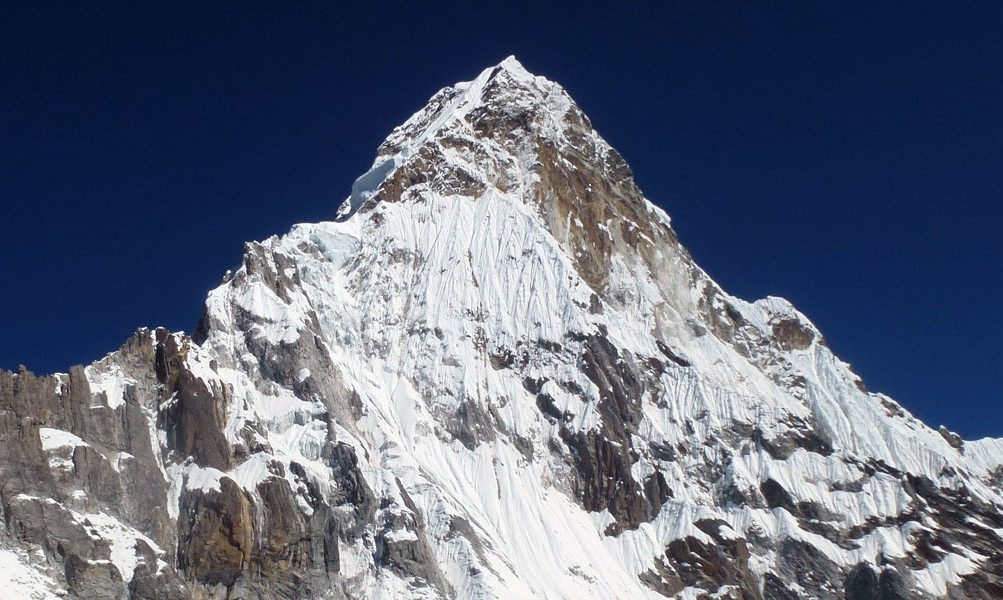
Since 1962, almost 600 individuals have climbed to the top of Pumori. Pumori offers a prized perspective of Mount Everest as well as a breathtaking panorama of Tibet, including the Rongbuk glacier. Although the peak has been reached from both the Southeast and the Southwest, the Southeast is the preferred approach. The summit is located at 28°00'53"N longitude and 86°49'41"E latitude, according to records kept by the government of Nepal and the Department of Tourism. Climbing can be done in the spring or the fall. For climbers searching for a challenging 7000m climb with only a month to spare, this peak is a good choice. This climbing path will teach you about technical climbing and calls for a high degree of physical fitness as well as a list of prior 8000m experience or comparable expertise.
Altitude: 7,145M / 23,494ft
Location: Nepal/Tibet Border
Total no of days: 33 Days
Grading: AD Assez Difficile
Best Time: Spring (April, May) and autumn (October, November)
Accommodation: Lodges and Basecamp, Camp 1/2/3
Himalayan sights: Mt.Everest, Mt.Lhotse, Mt.Ama Dablam, Mt.Lobuche, Mt.Makalu
Mount Putha Hiunchuli (7,246 m)
Dolpa, also known as the "Wild West" of Nepal and made well-known by Peter Matthiessen's novel The Snow Leopard, is where Putha Hiunchuli is situated. This peak, which has two separate sides and is rarely climbed, was first conquered by the Japanese in the early 1970s. For those who desire to climb very high yet on easy terrain, this peak is excellent.
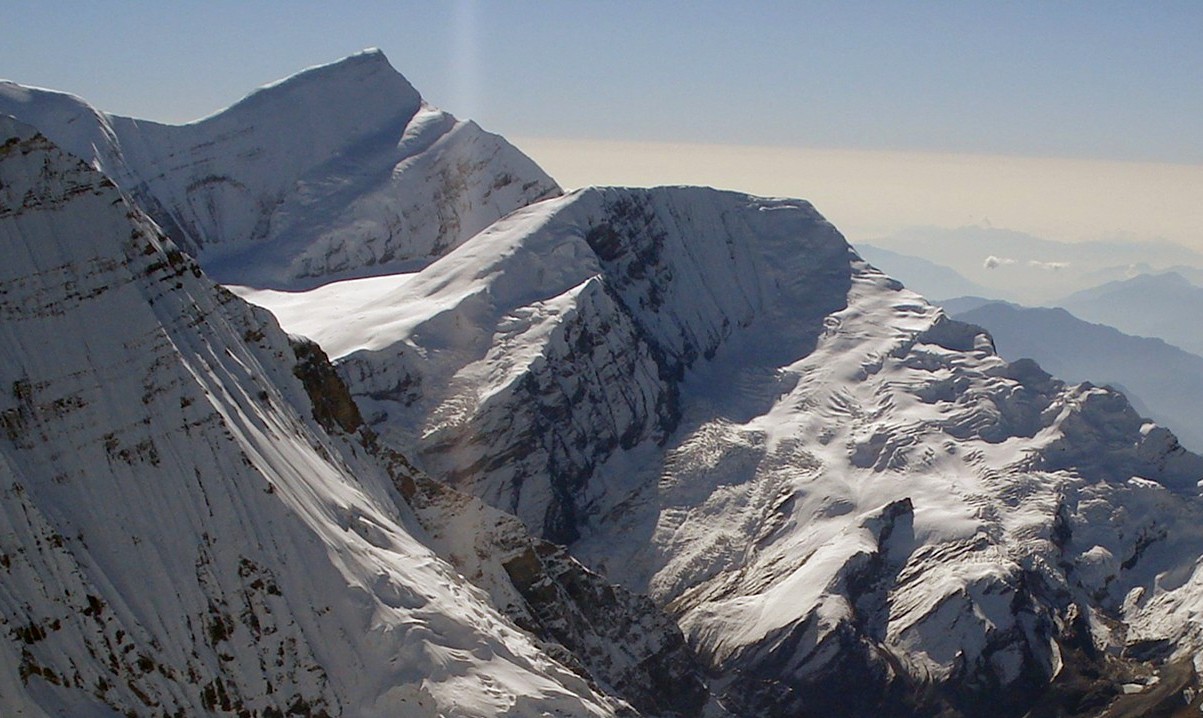
The itinerary of the caravan involves two thrilling mountain flights to Nepalgunj and Juphal, followed by a 6-day hike to base camp, which is at (4575m/15,009ft). The journey increases the likelihood that a summit attempt will be successful by allowing for a leisurely and proper acclimatization of the clients.
Despite the fact that the route is technically simple, the distances between the camps make it difficult to work. This peak is recommended for climbers seeking a genuine adventure experience. To complete this task, Luxury Holiday Nepal requires that our clients have two peaks over 6,000 meters, multiple high pass treks, very good physical fitness, and rigorous mountaineering instruction.
Altitude: 7,246M / 23773ft
Location: Dhaulagiri Himal Range
Total no of days: 31 Days
Grading: Peu Difficile (Easy)
Best Time: Spring (April, May) and autumn (September, October)
Accommodation: Lodges and Basecamp, Camp 1/2/3
Himalayan Sight: Mt. Dhaulagiri. Mt. Annapurna, Mt. Manaslu, Mt. Fishtail
Mount Churen (7,371 m)
Similar to Kala Pataar, Mount Churen is a rocky mountain in Nepal's Everest (Khumbu) Region that towers over the community of Chukkung. It is situated to the north of Chukkung and takes about 3–4 hours of strenuous labor. Imja Tse is frequently used as an acclimatization expedition by climbers, especially by those who haven't been to Kala Patthar or Everest Base Camp.

Even by Himalayan standards, the summit does not demand technical expertise; only endurance is needed. But I think more people who hike to Everest Base Camp ought to put it on their bucket lists since it offers the best views of Makalu, Nuptse, Ama Dablam, and Imja Tse.
Altitude: 7,371M / 24183ft
Location: Dhaulagiri Himal Range
Total no of days: 31 Days
Grading: AD/Scottish Grade III
Best Time: Late spring (traditionally less hazardous) and autumn
Accommodation: Lodges and Basecamp, Camp 1/2/3
Himalayan Sight: Mt. Annapurna, Dhaulagiri, Putha Hunchuli
Mount Tilicho (7,134 m)
Tilicho Summit (7134m/23,406ft) is another magnificent mountain that you should cross off your list. Sherpa Expedition & Trekking has over 40 years of trekking and climbing experience, and they can take you to the summit safely. You are in capable hands. Tilicho Peak is positioned atop a mountain range in the Manang District, halfway between Khangsar Kang (7558m) and Nilgiri North (7061m).

Views of Tilicho Lake (4920m), the highest lake in the world with azure-blue water, will be your reward for climbing to the top. From the peak, one can see the enormous Annapurna and Dhaulagiri massifs, as well as Kali Gandaki Gorge, the deepest gorge in the world.
Altitude: 7,134M / 23,406ft
Location: Annapurna Region
Total no of days: 32 Days
Grading: Peu difficile (PD++)
Best Time: Spring: April-May and autumn: September-October
Accommodation: Lodges and Basecamp, Camps 1/2/3
Himalayan Sight: Annapurna, Gangapurna, Fishtail
Mount Climbing Lhakpa Ri (7,045 m)
The highest accessible mountain in the world is Mt. Lhakpa Ri, at 7,045 meters. A desirable objective, the summit is remarkably situated right over the glacier from Everest. It is climbable by an old way up the East Rongbuk Glacier, which is a somewhat safe and straightforward route. It is the tallest peak outside of Asia and may be the most climbable mountain in the world because it is just above the 7,045m mark. The first person to climb Mount Lhakpa Ri was George Mallory, who had already seen the north col while en route to the Everest expedition in 1921. The second ascent of Everest by Bill Tilman during his 1936 survey of the mountain. The third climb was completed by Frenchwoman Michelle Pella in 1988, while the fourth ascent was performed by Ken McConnell in 1991. The four previous expedition teams are being followed by the present expedition teams.
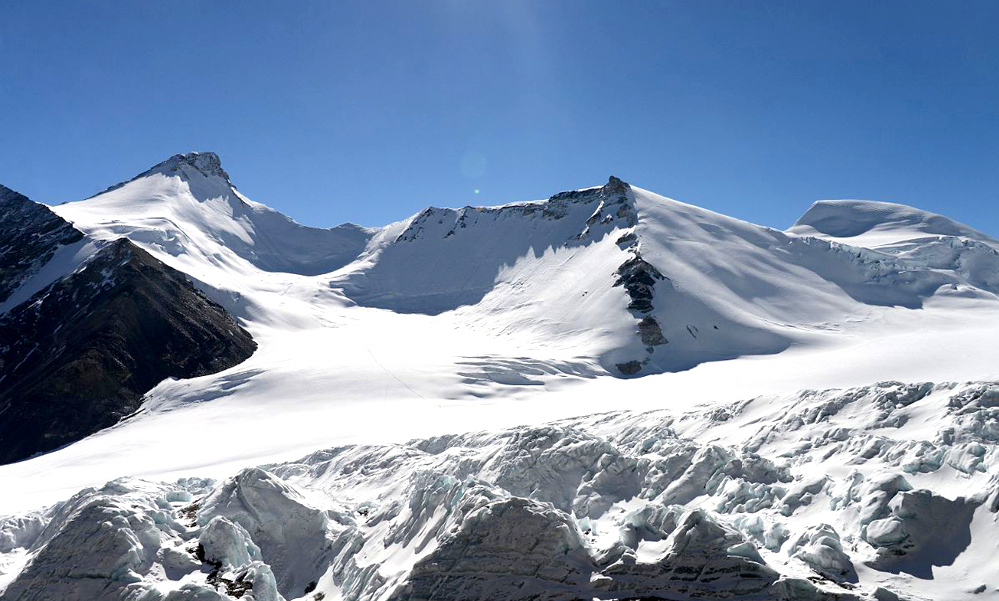
We passed past meadows bursting with ripening barley and yak herds on our way to Everest Base Camp. Lhakpa Ri, the world's most accessible 7,000-meter summit, and Advanced Base Camp are reached after a steady hike over stunning glaciers and peaks. The ascent ascends low-angled snow for 6000 meters before steepening to around 30-35 degrees at mid-height. The ascent follows a narrow, snow-filled depression on the southwest border. Near the Lhakpa La, we reach the crest of the ridge and proceed south along the snow ridge.
Altitude: 7,045M / 23,113ft
Location: Mahalangur range
Total no of days: 32 Days
Grading: PD. Easy-Moderate
Best Time: Late spring (traditionally less hazardous) and autumn
Accommodation: Lodges and Basecamp, Camps 1/2/3
Himalayan Sight: Mt.Everest
Ganesh Himal (7,429 m)
In the Ganesh Himal region, the Ganesh Himal tour is a well-known excursion. One of Nepal's most majestic mountains is Mt. Ganesh Himal (7446m), which is situated east of Langtang Himal and northwest of the Kathmandu Valley. Mount Ganesh Himal may be seen from Kathmandu on a clear day. Mount Ganesh I is the tallest summit in Ganesh Himal (Yangra). Nevertheless, H.W. Tilman's crew made their first attempt at the summit in 1950. In 1955, a Franco-Swiss Expedition group achieved the first ascend via the Southeast Ridge. The Northeast and North Faces were used in a number of unsuccessful initiatives that started in the 1950s and ended in 1981. Since the expedition allowed mountaineering, other climbers have reached Ganesh Himal's peak.
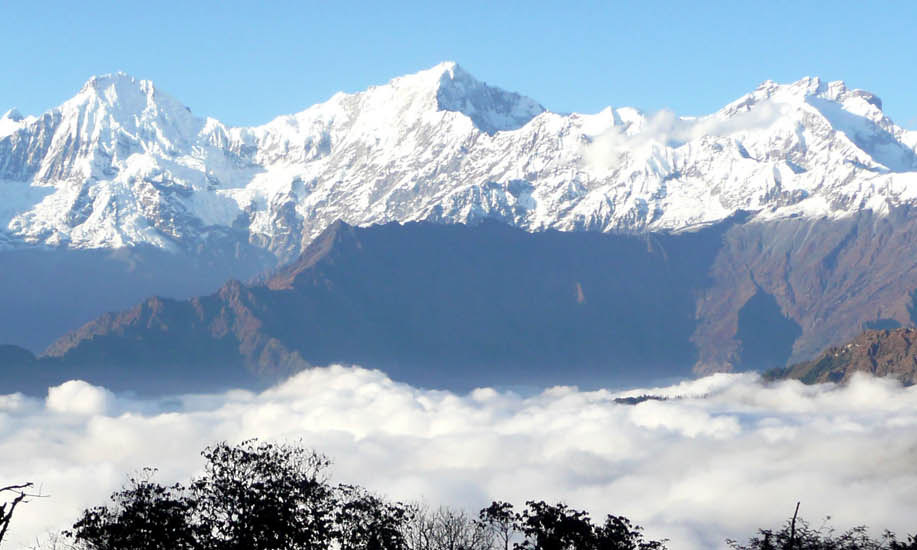
It starts in Syabru Bensi after a 7-8-hour journey from Kathmandu. Your journey via stunning Sherpa villages including Paragaon, Garthali, Thanjung, Kharka, Sanjung, and Khara on the climbing tour from Actual Adventures led to Ganesh Himal base camp. The breathtaking views of Ganesh Himal 1st (7429m), Ganesh Himal II (7150m), and Mount Manaslu that we get on the way up to Base Camp are almost tangible (8163m.). A hike through traditional Nepalese towns, woodlands, jungles, and fields of rhododendron, bamboo, pine, and other trees opens the Ganesh Himal excursion. The hike's highest point is a single mountain pass (4,500m), but before we attempt it, we are fully acclimated to the altitude.
Altitude: 7,429M / 24,373ft
Location: Dhading-Gorkha Border
Total no of days: 33 Days
Grading: Moderate Climb (PD++)
Best Time: Spring (April, May) and autumn (October, November)
Accommodation: Lodges and Basecamp, Camps 1/2/3
Himalayan Sight: Ganesh Himal I, Ganesh Himal II, Langtang Range, Manaslu Range, Lamjung Himal, Himalchuli, and Shringi Himal
Himlung Himal (7,126 m)
One of Nepal's ambitious 7000-meter peaks, Himlung Himal is 7,126 meters high and is situated close to Tibet in the Northern Annapurna Region. It is one of those isolated locations between the Annapurna and Manaslu areas that, although having immense mountaineering potential, only draws a small number of climbers each year. A Japanese expedition team made the first ascent of Himlung Himal in 1992, paving the way for upcoming climbers.
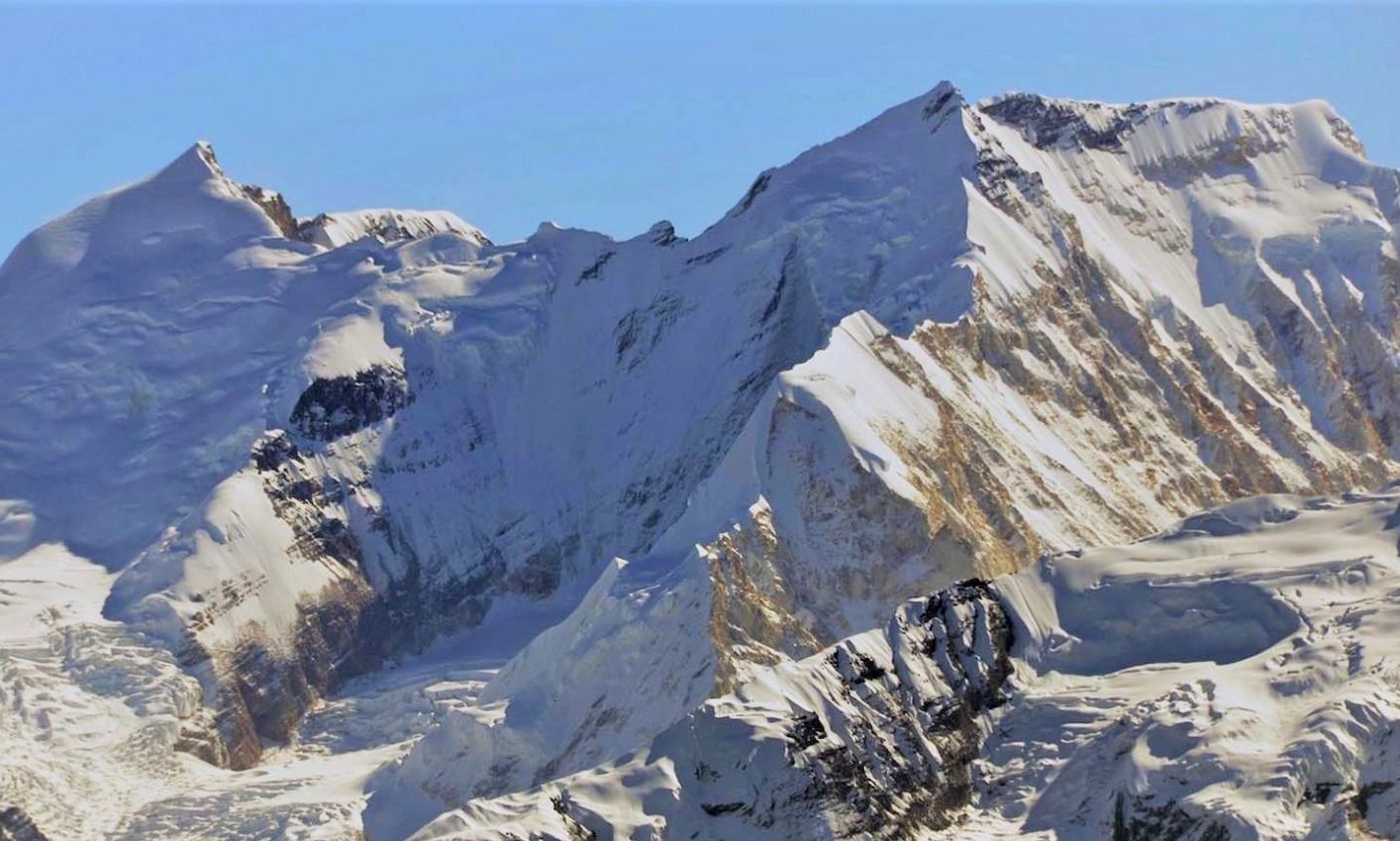
Himlung Himal offers a traditional trekking experience through the serene Nar Phu and Manang valleys, in addition to being a wonderful warm-up peak before tackling the 8000-meter summits. Along with the exciting adventure, being in the Himalayas allows one to put their strength and endurance to the test.
Altitude: 7,126m / 23,379ft
Location: Annapurna Region
Total no of days: 30 Days
Grading: Moderate Climb (PD++)
Best Time: Spring (April, May) and autumn (October, November)
Accommodation: Lodges and Base camp, Camp 1/2/3
Himalayan Sights: Annapurna, Machhapuchhre, Mardi Himal
Mount Baruntse (7,125 m)
Although challenging, the Southeast Ridge of Baruntse is a true climb. There are challenging areas of Mt. Baruntse's expeditions are fifty ranges above sea level, with a distinct ice cliff for hiking, and there is avalanche risk. The spring, which is the safest season, is when climbers have the most success. However, a few climbers have also succeeded in reaching Mt. Baruntse's summit during the autumn and winter months. Expeditions to Baruntse enjoy the feeling of being in a remote location without having to expend a lot of time or effort. There are two ways to get to the height from Lukla: by Mera La Pass and Hunku Glacier, where there is a chance to hike Mera Peak as part of the experience; and via Tumlingtar, where one can access the West Barun Glacier and walk up Makalu. The second option offers a full-spectrum experience by including a crossover and a walk through Mera La Pass to Lukla.

The Baruntse Expedition will ascend along the southern ridge that hangs above the well-known West Pass; in fact, this is the traditional route that was first opened by Hillary and Ship Ton in 1952. The standard route departs from Lukla and travels through the Hungu Valley, one of Nepal's most fertile regions, before heading north through a beautiful alpine setting. The stroll provides excellent acclimatization and goes through friendly Sherpa America. The Baruntse Base Camp is located near a picturesque lake beneath the Amphu Laptsa Pass at an elevation of roughly 54,00 meters. The route continues along an extended ridge until it reaches the peak.
Altitude: 7,125M / 23,389 ft
Acclimatization peak: Mera Peak 6476M
Location: Makalu Barun National Park
Total no of days: 32 Days
Grading: Peu difficile (PD++)
Best Time: Spring (April, May) and autumn (October, November)
Accommodation: Lodges and Camping at Mera Peak/Baruntse BC/Camp 1 - 2
Himalayan Sights:Makalu, Mera, Kanchanjungha
Permit Fee for mountains over 7000 meters
| S.N | Name of the Mountain | Spring season | Autumn/Fall season | Winter/Summer and monsoon season |
| 1 | Mount Pumori (7145 m) | $500 | $250 | $125 |
| 2 | Mount Putha Hiunchuli (7246 m) | $500 | $250 | $125 |
| 3 | Mount Churen (7371 m) | $500 | $250 | $125 |
| 4 | Mount Tilicho (7134 m) | $500 | $250 | $125 |
| 5 | Mount Climbing Lhakpa Ri (7045 m) | $500 | $250 | $125 |
| 6 | Ganesh Himal (7429 m) | $500 | $250 | $125 |
| 7 | Himlung Himal (7126 m) | $500 | $250 | $125 |
| 8 | Mount Baruntse (7125 m) | $500 | $250 | $125 |
The 7000-meter peaks of Nepal offer a mesmerizing array of challenges and experiences for mountaineers around the world. From the technically demanding ascents of Mount Pumori and Mount Baruntse to the remote beauty of Mount Putha Hiunchuli and Himlung Himal, each peak presents its own unique adventure. These mountains not only test the limits of human endurance and skill but also offer unparalleled opportunities to connect with the majestic natural beauty and rich cultural heritage of Nepal. Whether you are a seasoned climber or someone looking to push your boundaries, the 7000-meter peaks in Nepal promise an unforgettable journey that goes beyond mere mountaineering, inviting climbers into the heart of the Himalayas.
FAQs: 7000 Meter Peaks in Nepal
Q: How many 7000 meter peaks are there in Nepal?
A: Nepal is home to more than a dozen 7000 meter peaks, offering a wide range of climbing experiences for mountaineers. The exact number can vary depending on classification criteria, but notable examples include Baruntse, Putha Hiunchuli, Himlung Himal, and Ganesh Himal.
Q: What is the best time of year to climb 7000 meter peaks in Nepal?
A: The best time to climb 7000 meter peaks in Nepal is during the pre-monsoon season (spring, from March to May) and the post-monsoon season (autumn, from September to November). These periods offer the most stable weather conditions, though specific mountains may have slightly different optimal windows.
Q: Do I need a permit to climb a 7000 meter peak in Nepal?
A: Yes, a permit is required to climb any peak over 5800 meters in Nepal, including all 7000 meter peaks. Permit fees vary by peak and season, and additional requirements may include a liaison officer and environmental levies.
Q: How difficult is it to climb a 7000 meter peak in Nepal?
A: Climbing a 7000 meter peak is a challenging endeavor that requires a high level of physical fitness, technical climbing skills, and acclimatization to high altitudes. The difficulty varies significantly between peaks, with some offering relatively straightforward ascents and others demanding advanced technical skills.
Q: What are the risks of climbing 7000 meter peaks?
A: Climbing at high altitudes comes with significant risks, including acute mountain sickness (AMS), frostbite, falls, and avalanches. Proper acclimatization, equipment, and guidance from experienced climbers or guides are essential to mitigate these risks.
Q: Can beginners climb 7000 meter peaks in Nepal?
A: While some 7000 meter peaks are more accessible than others, climbing at this altitude is generally not recommended for complete beginners. Prior experience with high-altitude trekking and some technical climbing skills are advisable before attempting these climbs.
Q: How long does it take to climb a 7000 meter peak in Nepal?
A: The duration of an expedition to a 7000 meter peak can vary widely, from about two to four weeks, depending on the specific mountain, route, weather conditions, and the climbers' speed and acclimatization process.
Q: What gear do I need for climbing a 7000 meter peak?
A: Essential gear includes a down suit, climbing boots, crampons, ice axes, harness, ropes, carabiners, helmets, and high-altitude tents, among others. Personal gear should be complemented by a comprehensive medical kit and communication devices.
Q: Are there any environmental concerns with climbing in Nepal?
A: Yes, high-altitude climbing has environmental impacts, including waste generation and ecosystem disruption. Climbers are encouraged to minimize their footprint by following leave-no-trace principles and participating in or contributing to local conservation efforts.
Q: How can I prepare for a 7000 meter climb in Nepal?
A: Preparation should include physical conditioning, technical skills development, familiarization with high-altitude environments, and thorough planning regarding logistics, route selection, and emergency procedures.
If you need any further information, please contact us by email: [email protected], Phone: +977- 985 100 5129 (WhatsApp)